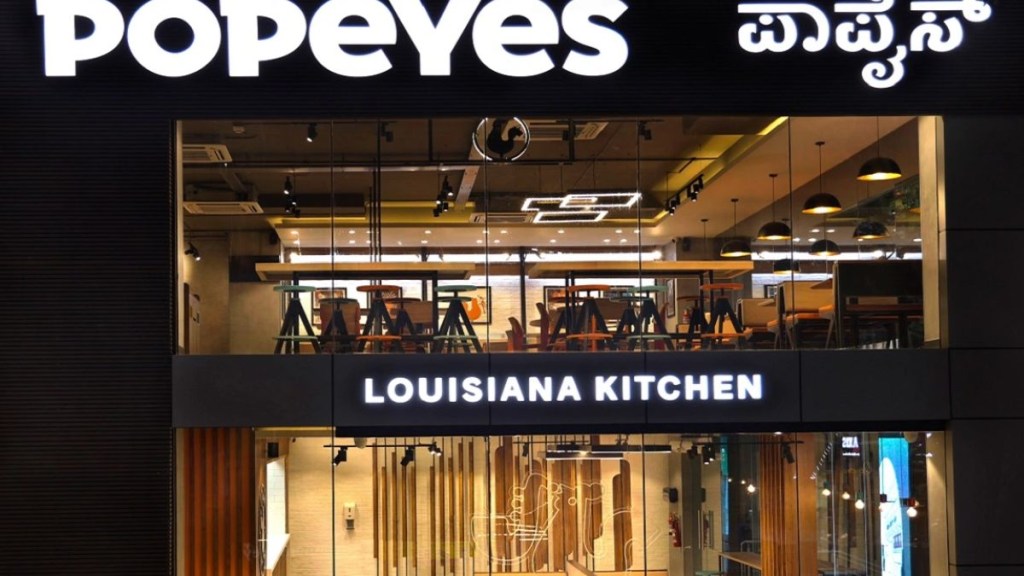American quick-service restaurant chain Popeyes plans to open 250 stores across India in 4-5 years from now, 50 of which it aims to open in FY24. This also includes the 12 stores the company operates in Bengaluru and the one in Chennai.
Popeyes entered India in partnership with Jubilant FoodWorks in January 2022 and has so far focused on the southern regions of the country, thanks to a relatively larger meat-eating population — in Tamil Nadu for instance, where 97.9% of the people consume meat once a week, as opposed to Gujarat, where the percentage is much smaller at around 28%, Sameer Khetarpal, CEO and MD, Jubilant FoodWorks, said.
On an average, about 70% of the country’s population eats meat once a week.
The approach at Popeyes, of concentrating in the southern belt, is similar to what its direct competitor in India and globally – KFC – did during its initial years around mid- and late 90s. At present, KFC has around 38 stores in Bengaluru.
But Jubilant sees a bigger opportunity in India as it believes the fried chicken market is still relatively untapped. In hindsight, asked what the companies would have done differently, Khetarpal said: “We should have aimed to grow faster. Instead of opening 13 stores, we should have opened 25, but at the same time we didn’t want to cut any corners. But that will change in the coming years and we will be present in all relevant and major locations. However, Popeyes will not go as deep as the Tier 3 and Tier 4 regions, like Domino’s does.”
The hesitance of penetrating deeper into regions was likely because of the higher average order value (AOV), analysts pointed out. For instance, the AOV at Domino’s was around the `420 mark and for chains similar to Popeyes, the AOV was at least 20-30% higher than that, they said.
To please the Indian palate and popularise its dishes, Popeyes is currently piggybacking on its flagship product, the Cajun spiced chicken and sandwiches. It even increased a notch the spiciness of its offerings and introduced rice-based dishes in the country. “The endeavour is not to Indianise our menu. The idea is to keep the brand value intact in all markets that we enter and the products we sell,” Khetarpal said.
To expand its reach, Jubilant — as a group — announced a capex plan of `650 crore over the coming 12 months and said it would increase that to a total of `900 crore in 18 months, mainly to set up its Bengaluru commissary (`250 crore), allocate `100 crore towards maintenance capex, and spend a total of `300 crore on store expansion. It did not, however, specify how much each brand would get from the total projected figures.
By the end of FY24, when Domino’s has 3,500 stores, Popeyes would have 250 outlets.
Globally, Popeyes was earlier opening 30 stores in a year, but after Restaurant Brands International (RBI) bought the food chain in 2017, it is now opening around 200 stores a year, Joshua Kobza, CEO, RBI, told FE. It hopes to grow the brand at a similar pace.
“The growth at Popeyes has been spectacular, and along with Jubiliant, we know how to grow, but the idea is not to get ahead of ourselves. We are only as good as the last sandwich we served,” Kobza said. The Indian market is huge and there is a lot of room to grow, he added.
The company estimates that the market for fried chicken in India is at around `4,200 crore and is growing at a compound annual growth rate (CAGR) of 18%.
Over the past year, moving away from its introductory prices, Popeyes hiked its prices by about 4% in India, but it will not be going for any further rate hikes.

